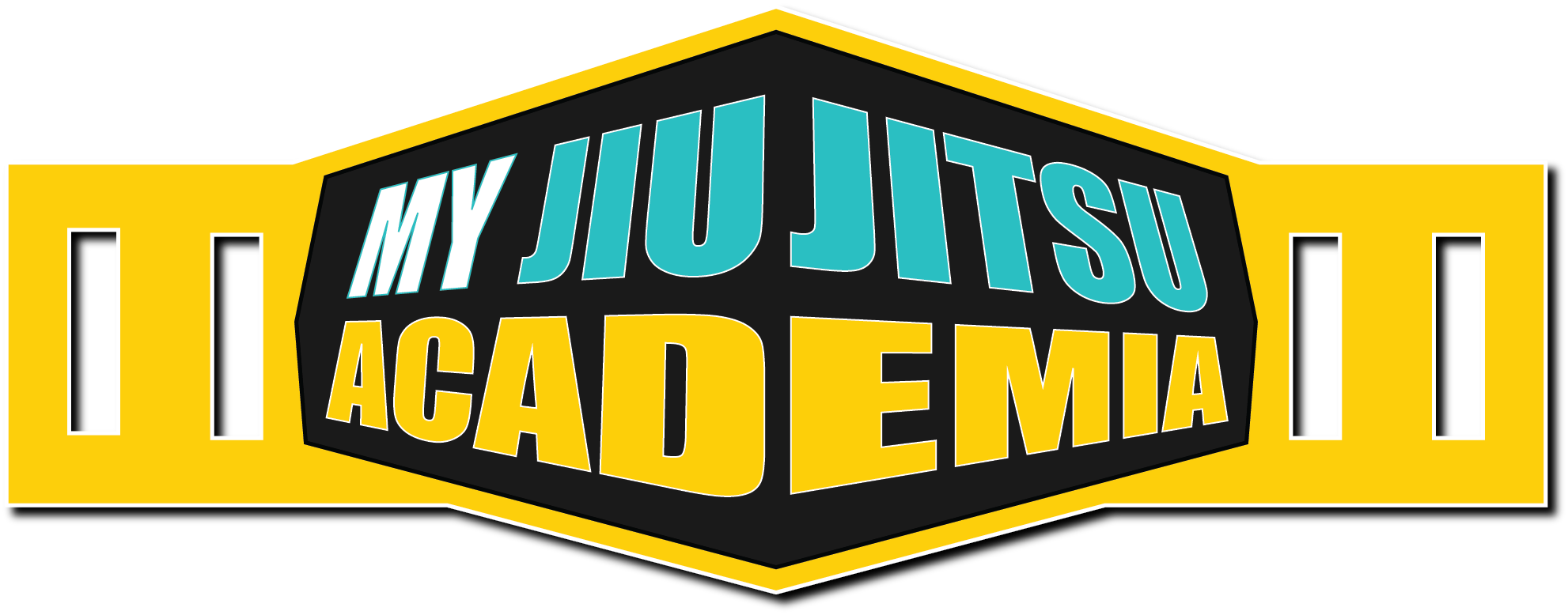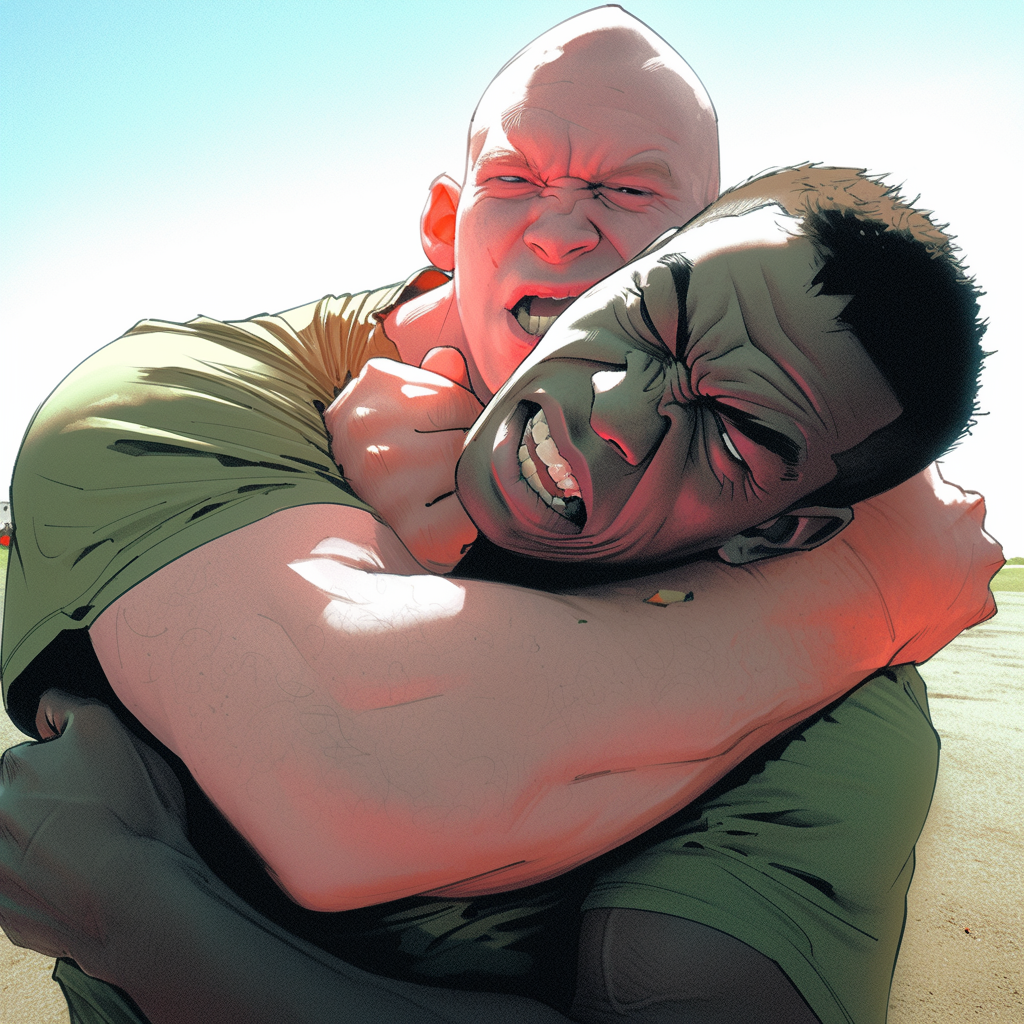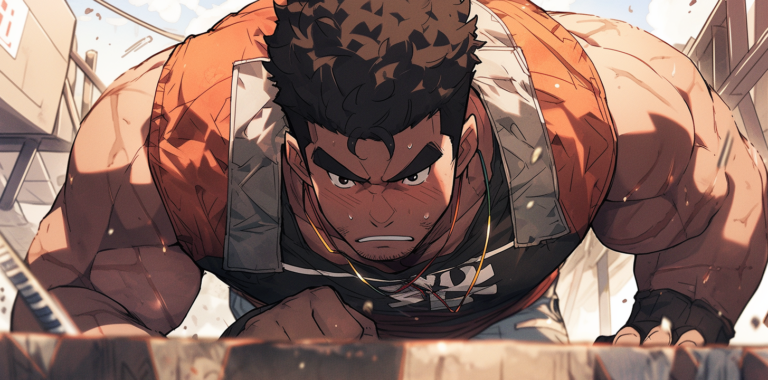The Art of the Rear Naked Choke
: A Comprehensive Guide
Dive into the world of martial arts with our comprehensive guide on the rear naked choke. Learn its history, techniques, and applications in self-defense and competitive fighting.
Introduction
The world of martial arts is vast and diverse, with a myriad of techniques and styles that have evolved over centuries. One such technique, known for its effectiveness and efficiency, is the rear naked choke. This grappling hold, often seen in various martial arts and combat sports, is a powerful tool in the arsenal of any fighter. But what exactly is a rear naked choke? How is it performed, and what are its implications in the world of martial arts? Let’s dive in and explore.
The Rear Naked Choke: A Brief Overview
The rear naked choke, or RNC, is a submission hold used primarily in martial arts and combat sports. It’s a technique that involves a stranglehold/chokehold from behind the opponent, hence the term “rear.” The term “naked” refers to the fact that the choke doesn’t involve the use of a gi or clothing for leverage, unlike some other chokes in martial arts.
Origins and History
The rear naked choke has roots in various martial arts, including Judo and Brazilian Jiu-Jitsu (BJJ). In Judo, it’s known as “Hadaka Jime,” which translates to “naked strangle.” In BJJ, it’s often referred to as “Mata Leão,” or “Lion Killer.” The technique has been passed down through generations of martial artists and has become a staple in many combat sports, including Mixed Martial Arts (MMA).
Mechanics of the Rear Naked Choke
The rear naked choke works by applying pressure to the neck, specifically targeting the carotid arteries. These arteries supply blood to the brain. By applying pressure, the blood flow is restricted, leading to a rapid loss of consciousness if the choke is not released.
Executing the Rear Naked Choke: Step-by-Step Guide
Performing a rear naked choke involves a series of steps that require precision and timing. Here’s a step-by-step guide on how to execute this technique.
Securing the Position
The first step is to secure your position behind your opponent. Aim to get what we call the ‘seatbelt’ grip. One arm drapes over their shoulder ready to attack their neck, and the other snakes under their opposite side armpit, both hands clasps together in various grips. This control is your anchor and will help you keep the middle of your chest pinned on to the center of your opponents back.
Your legs should slide in between your opponent’s, your insteps hooking inside their thighs, by kicking you heels back into the soft tissue are of your opponent’s thigh. These HOOKS are your control points. Just make sure not to cross your feet, as it might leave you vulnerable to ankle locks.
Once you have your hooks and the seatbelt grip, make sure you get your head positioning right. Your head should be tucked in close to theirs, further limiting their mobility and options.
the Choke – RNC
Once you’ve secured your position, the next step is to apply the choke. This involves wrapping your arm around your opponent’s neck, with their throat in the crook of your elbow. Your other hand should slice in the space between your head and your opponents head to connect to your opposite arm’s bicep.
The final step is to pull your shoulders back, by doing this movement it incorporates your back muscles into the choke causing a more powerful hold. Make sure to keep your head pressed tightly against your opponents.
Famous Uses Of The Rear Naked Choke
There have been numerous instances where the rear naked choke has been used to secure victory in high-profile fights. For example, in UFC 196, Nate Diaz used a rear naked choke to defeat Conor McGregor, demonstrating the technique’s effectiveness at the highest level of competition.
Rear Naked Choke: Variations and Applications
The rear naked choke is not a one-size-fits-all technique. There are several variations of the choke, each with its unique application and effectiveness. Let’s take a closer look at some of these variations.
“Figure Four” or “Short” Variation
This variant is considered a “blood choke” because it restricts blood flow to the brain via the carotid arteries. When applied correctly, it can cause temporary unconsciousness in a few seconds. The attacker’s arm encircles the opponent’s neck, with the opponent’s trachea at the crook of the elbow. The attacker’s hand then grasps their own upper arm, and the other hand is placed behind the opponent’s head. The elbows are then brought together such that lateral pressure is applied to the neck on both sides.
“Body Lock” or “Hooks” Variation
In this variation, the attacker places one of their legs across the stomach or lower chest of the victim. They then place their other leg over their own shin, creating a figure-four with their legs. This allows them to limit movement and stay close to the back of their victim.
“Clasping Hands” Variation
This variation has the supporting hand clasp the hand of the choking arm, allowing more pressure to be applied to the neck, but losing some of the control of the head. This alters the choke somewhat so that it is more likely to be applied as an airway-restricting choke or mixed blood and air choke, which results in more pain but a slower choke-out.
The Rear Naked Choke in Self-Defense
While the rear naked choke is a popular technique in competitive fighting, it’s also a valuable tool for self-defense. Its effectiveness in neutralizing an attacker quickly and efficiently makes it a go-to technique for many self-defense practitioners.
When to Use the Rear Naked Choke
The rear naked choke is most effective when you’re behind your attacker. This could be a result of a successful strike evasion, usually a wild hook or a takedown. It’s important to remember that the goal in a self-defense situation is not to engage in a prolonged fight but to neutralize the threat as quickly and safely as possible.
Safety Considerations
While the rear naked choke is an effective self-defense technique, it’s also a potentially lethal one. It’s crucial to understand the power of this technique and to use it responsibly. When applied as a blood choke, it immediately reduces the supply of oxygen to the brain, leading to unconsciousness and ultimately, if not released, to brain damage or death.
Frequently Asked Questions
What is a rear naked choke?
A rear naked choke is a submission hold used primarily in martial arts and combat sports. It involves a chokehold from behind the opponent, hence the term “rear.” The term “naked” refers to the fact that the choke doesn’t involve the use of a gi or clothing for leverage.
How does a rear naked choke work?
The rear naked choke works by applying pressure to the neck, specifically targeting the carotid arteries. These arteries supply blood to the brain. By applying pressure, the blood flow is restricted, leading to a rapid loss of consciousness if the choke is not released.
Is the rear naked choke dangerous?
Yes, the rear naked choke can be dangerous if not applied correctly or responsibly. It can lead to unconsciousness in a matter of seconds and, if not released, can cause brain damage or even death.
Can the rear naked choke be used in self-defense?
Yes, the rear naked choke is a valuable self-defense technique. It’s
How to Escape a Rear Naked Choke
Escaping a rear naked choke is a complex process that requires knowledge, practice, and quick thinking. Here are some general steps you can take if you find yourself in this precarious position:
- Stay Calm: The first step to escaping any submission hold is to stay calm. Panic will only make the situation worse and could lead to a quicker submission.
- Protect Your Neck: Try to prevent your opponent from fully locking in the choke. You can do this by tucking your chin and using your hands to create a barrier around your neck.
- Create Space: Try to create space between your neck and your opponent’s arm. You can do this by turning into the choke and using your hands to push on your opponent’s elbow.
- Escape: Once you’ve created enough space, you can start to work on your escape. This could involve turning into your opponent, getting to your feet, or transitioning to a more advantageous position.
Remember, these are general steps and might not work in every situation. The key is to practice regularly and understand the mechanics of the choke so you can effectively counter it.
Conclusion
The rear naked choke is a powerful and versatile technique that has stood the test of time in the world of martial arts. Whether you’re a seasoned fighter or a self-defense practitioner, understanding the mechanics, applications, and escapes of the rear naked choke is invaluable. Remember, with great power comes great responsibility. Use this technique wisely and always respect your training partners.







